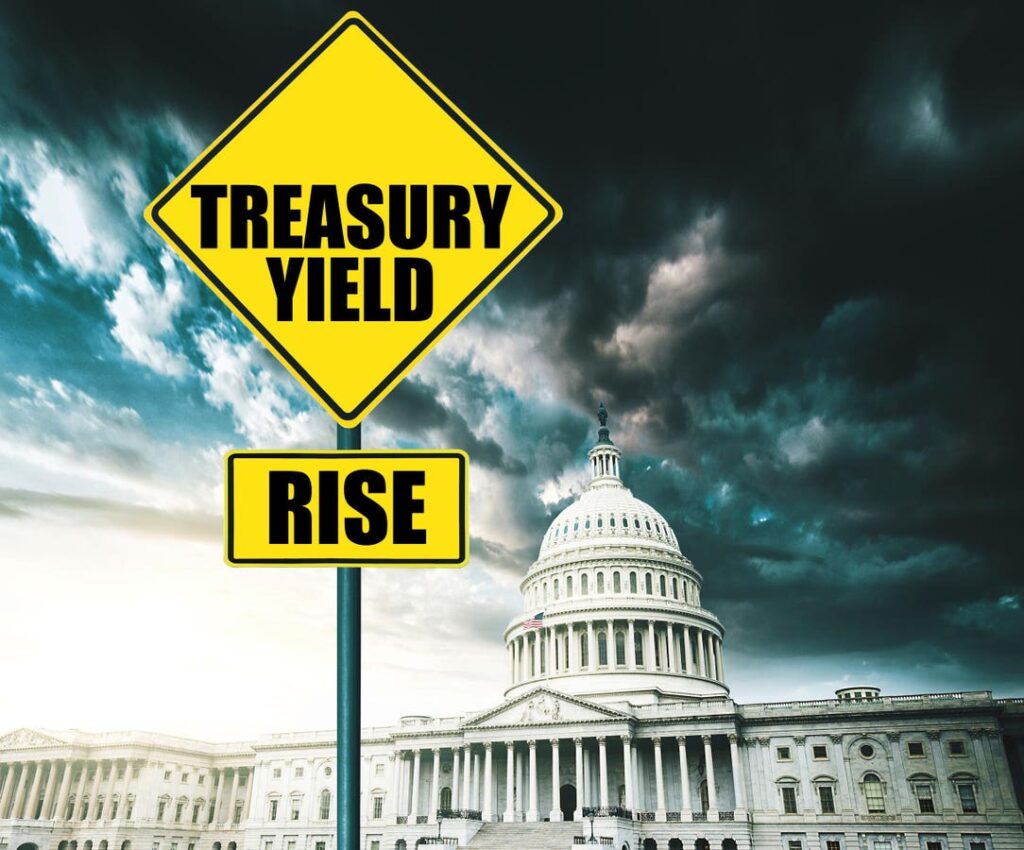Despite some pundits being quite convinced that US fiscal policy or the end of American exceptionalism is the reason for the recent rise in US Treasury yields, Buffalo Springfield was closer to reality when they sang, “Something’s happening here, What it is ain’t exactly clear.” It is not disputed that 10-year US Treasury yields are 52 basis points (0.52%) higher since the 2025 low of 3.99% on April 4. Using US Treasury Inflation-Protected Securities (TIPS) data, expected higher inflation accounted for 15 basis points, while the remaining 37 are from a higher real (after-inflation) return.
Notably, yields were at their nadir when the betting odds of recession were at their highest. As one should expect, yields have risen as the odds of a recession have declined. Directionally, the move in yields is logical, though some might still argue that yields have increased more than is warranted.
Global Yields
US government bond yields in the US have risen more than many other developed countries since April 4. Interestingly, our neighbor to the North has experienced a similar increase.
Notably, global government bond yields hit their low during the pandemic and have trended higher since then.
If one looks at government yields since the end of last year, a different picture emerges. While higher government bond yields have been a global phenomenon, the US has seen slightly lower yields!
US Dollar
The other proof point for those arguing for the danger of US fiscal policy or the end of American exceptionalism is the recent weakness in the US currency relative to other currencies. While there is no doubt that the US dollar has been weaker year-to-date, it follows a period of exceptional relative strength.
The US dollar remains stronger than it has been most of the time since 1999. Further, as shown in the historical data, periods of a weaker US dollar do not uniformly lead to higher US Treasury bond yields.
Fiscal Policy
Without exception, the fiscal position of large countries, as measured by government debt relative to GDP, deteriorated with the impact of spending during the pandemic. Most countries were already piling on more debt relative to economic activity, but the pandemic accelerated the trend.
There is no magic level of debt-to-GDP that signals disaster since countries with a more resilient economy can service more debt. Furthermore, countries like the US, which has a high per capita GDP, control of the global reserve currency, and only issues debt in that currency, can handle significantly more debt levels than most other countries.
German government debt levels are understated relative to reality. While Germany isn’t legally liable for the debts of its profligately spending neighbors, it shares a common currency and its share of European Union (EU) issued debt. Historically, Germany has been forced to contribute the most to bailout funds when other EU countries have encountered problems.
The US House of Representatives passed its tax legislation, which, despite reports to the contrary, does not make the US fiscal situation any worse, according to Strategas. Tariffs should produce about $200 billion in revenue annually and are not included in the legislation’s official scoring, leading to much confusion. The US Senate will almost certainly make some changes, so the House bill is unlikely to be the final version implemented.
Market Reaction
The S&P 500 sits only 5.6% below its mid-February high in a robust rebound from the 19% decline from the peak reached on April 8. The Magnificent 7, consisting of Microsoft (MSFT), Meta Platforms (META), Amazon.com (AMZN), Apple (AAPL), NVIDIA (NVDA), Alphabet (GOOGL), and Tesla (TSLA), has fared worse, and the group is 12% below its mid-December summit.
The proximate cause of the decline in stocks last week was the reheating of the tariff war, which increased the headwinds for the US and global economy. President Trump threatened the European Union with a 50% tariff and smartphone makers, notably Apple (AAPL), with a 25% tariff rate. The betting odds of recession rose to 41%, sending stocks 2.6% lower last week.
Despite the likely economic drag from the tariffs, only two expected rate cuts for 2025 are expected. There is little chance of a rate cut at the mid-June Federal Reserve meeting.
What To Watch This Week
The primary focus will likely remain on the fallout from the tariffs, with markets watching for any changes in US policy and retaliation or concessions from other countries.
Friday’s April inflation reading will likely be friendly. The Core PCE Price Index is the Federal Reserve’s favorite measure of inflation and should moderate to 2.5% year-over-year from the 2.6% pace in March.
The last Magnificent 7 stock to report earnings is Nvidia (NVDA) on Wednesday after the close. As the leader in artificial intelligence chips, its results and forecasts will be closely watched to judge the health of technology spending.
Conclusion
The rise in US Treasury yields does not point to a US-specific problem; instead, it is a function of the lower probability of an economic downturn and perhaps a shift in the global appetite for government bonds. Yields are not high enough yet to significantly negatively impact stock valuation since the higher yields are accompanied by less risk of an earnings decline from a recession.
Like many other countries, the current fiscal trajectory in the US is unsustainable, but the recent tax bill wouldn’t worsen things. Investors can be forgiven for wishing it improved the path, but the Senate will have their say next, and bond market participants will be watching closely. Government bond investors are demanding higher yields from most countries, so there might be a shift in the willingness of markets to fund large deficits, but it is too early to know for sure.
Disclosure: Glenview Trust may hold the stocks mentioned in this article within its recommended investment strategies.
Read the full article here

